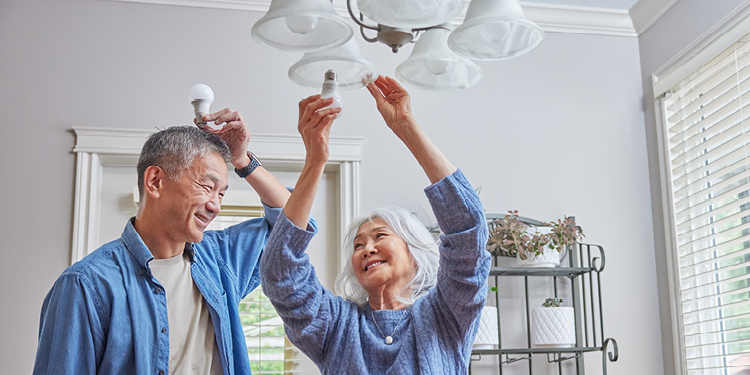What would these old walls say about improving energy efficiency?
November 14, 2023
Updated March 21, 2025
If the walls of your house could talk, what would they say? (No, not your deepest secrets.) Perhaps they’d whisper in drafts under the doors or rattles at the windows. Maybe the windows fog up on a cold day. And in winter, a whoosh of snow falling off the roof might be a telltale sign of heat escaping through the attic. Maybe your utility bill just plain says it costs a lot to heat your home.
You get to know a house after living in it for a while. Is it telling you it’s time for a renovation—and not just to improve its looks but to change how it feels to live in?
While we’re already supporting builders and developers to achieve Step 5 of the BC Energy Step Code with new construction, we’ve found ways to improve the energy efficiency of older properties, too.
To make changes to reduce your home’s energy use and make it more comfortable, here are some tips from contractors as well as insights from homeowners who participated in our Deep Energy Retrofit Pilot Program.
What’s the difference between a home renovation and a deep energy retrofit?
While a renovation might focus on improving certain aspects of a home, such as updating kitchens and bathrooms, a deep energy retrofit aims to improve the home’s energy performance (and reduce energy use by 50 per cent or more), looking at the whole house as a system.
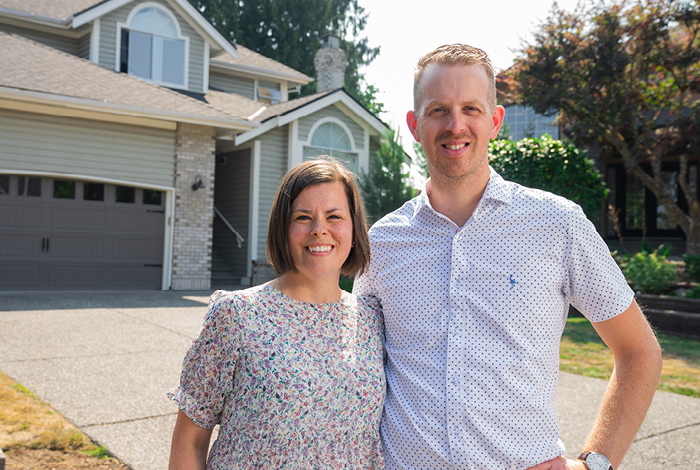
Rebecca and Dan Poelman, Deep Energy Retrofit Pilot Program participants
Some homeowners may choose to do deep energy retrofits as part of a bigger home renovation project. Others, like Deep Energy Retrofit Pilot Program participants the Poelman family and Jonathan Baylis, may have already done cosmetic upgrades like kitchens, bathrooms and flooring, but still found themselves needing to replace old heating systems, contending with cold spots or high heating bills and lacking consistent airflow.
“Draftiness fights all the energy efficiency that you put into a home and [if] that is not sealed up, you lose the heat that you pumped into the house,” Dan found out. “That was really interesting and was consistent with the goal of getting all of the air exchanges in our home tighter.”
Not only does a deep energy retrofit mean improved energy efficiency and comfort compared to cosmetic renos, it also means a helping hand. Our Deep Energy Retrofit Pilot Program participants flexed their DIY muscles in the past and completed cosmetic renos on their own. But in our interviews, they told us they were glad to have professional contractors doing this work.
Deep energy retrofits focus on upgrading the building envelope first (including walls, insulation, windows and doors) and then on the efficiency of the heating, hot water and ventilation systems. It aims to improve energy use, airtightness, insulation, comfort and air circulation through a comprehensive package of upgrades such as:
- new or upgraded insulation in walls, attic and/or basement
- new exterior insulation and cladding
- new energy-efficient doors and windows
- improved air sealing
- new high-efficiency furnace, boiler or dual fuel heating system
The Deep Energy Retrofit Pilot Program involved 20 single-family homes and four multi-unit residential buildings across B.C., including the Lower Mainland, Vancouver Island, Okanagan and Kootenays.
This type of study has not been done before in British Columbia to this scale to make significant gains on energy efficiency and performance. It’s a very exciting project we’re proud to be part of.
Einar Halbig, energy advisor, E3 Eco Group
It started with a home energy evaluation
Ryan Coleman, founder of EcoLighten, an energy services consulting firm and implementation contractor for homes in our Deep Energy Retrofit Pilot Program, says the first step in the process is to get an evaluation from a qualified energy advisor. This will help you establish a “baseline” of how your home is performing energy-wise compared to similar houses.
Energy advisors, like Einar Halbig of E3 Eco Group, do measurements and tests such as the blower door test to find out where air is entering or escaping the home. They also use sophisticated software to model or simulate how the house might perform with certain upgrades, whether that’s increased air sealing and insulation, new energy-efficient windows and doors, or a new furnace or heat pump.
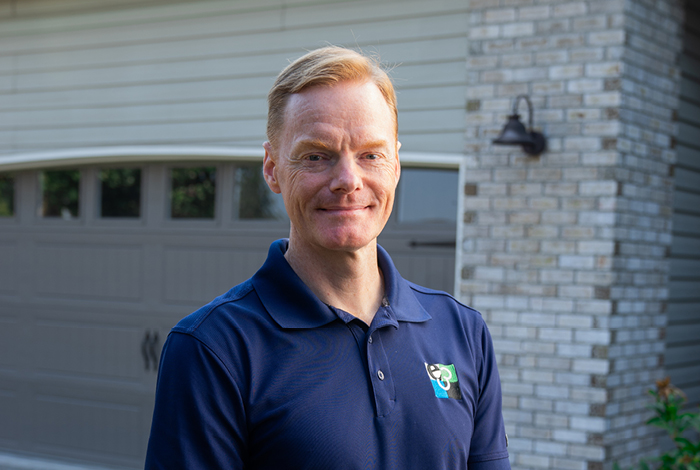
Einar Halbig, energy advisor, E3 Eco Group, who provided energy evaluation services for the Deep Energy Retrofit Pilot Program
Even if you think you already know what the house needs, an energy evaluation is an important first step for a deep energy retrofit project. You’ll get a report with a list of recommendations for your house, and you may be surprised at what the walls are telling you. For example, program participants Rebecca and Dan Poelman knew they needed a new furnace and that the windows in their 1990s-built home felt cold, but their energy evaluation revealed how much air was actually leaking through the walls, doors and windows and the need for improved air tightness to reduce the drafts.
“We have a crawl space and there was next to no insulation down there,” Dan pointed out. “Wow… that was a terrible design idea in the 1990s. Now, there is a way to resolve it. And to feel the impact of that was really something.”
Hiring a professional energy advisor may cost a few hundred dollars, but there are provincial and federal energy efficiency rebate programs you may be eligible to apply for. Having the list of recommended upgrades will also be helpful when you approach contractors.
How can I find a contractor for my deep energy retrofit project?
You can find qualified gas and electrical contractors to install heating systems and appliances through FortisBC’s Trade Ally Network directories, as well as contractors to install insulation, doors and windows, and heat pumps through the Home Performance Contractor Network. (Having upgrades installed by a professional is required if you’re applying for our rebates.)
If you’re a homeowner, you might have to go the extra mile while planning, researching, coordinating and communicating with the various trades and subcontractors, Ryan advised. This is because of the limited number of general contractors out there that specialize in doing energy-efficiency retrofits as a package.
What can I expect during a deep energy retrofit?
The extra mile travelled will be worth it. The participants spoke glowingly of their experience with the contractors. For example, Jonathan found the contractors to be particularly friendly and Dan’s kids were fascinated by all the equipment and vehicles they used.
“Our son loves all things that move,” he said. “So, he was really into watching the guys work. That was so fun.”
As Dan experienced, our pilot program was designed to minimize disruption to the participating homeowners as upgrades are installed. While certain rooms of the house at certain times will become a work zone, deep energy retrofits are focused more on the exterior of the house, as well the mechanical room and basement. This means they should not require residents of the home to move out while work is completed. In fact, the three participants we caught up with lived in their house the entire time that their retrofits were conducted.
It feels like we won the lottery. It’s such a great opportunity to have our home improved with such a substantial amount of resources. It’s been phenomenal.
Dan Poelman, Deep Energy Retrofit Pilot Program participant
What do the new walls have to say?
When all is said and retrofitted, if done right, a more energy-efficient house may be quieter and less drafty, have reduced energy use, more even temperatures throughout the year (even in cold snaps and heat waves) and better indoor air quality. And homeowners may save on their heating and hot water bills. When we caught up with the pilot participants, we were experiencing a record breaking drop in temperature across B.C. All three expressed appreciation that the retrofit afforded them a cosier house.
There are aesthetic benefits to a deep energy retrofit, too. Most of our Deep Energy Retrofit Pilot Program participants will receive new triple-pane windows and new doors as part of their upgrades. Experienced renovators (and our pilot participants) will tell you the immediate change new windows can make to the look and feel of a house.
“It’s noticeable especially during this cold snap. You can stand next to windows as I am doing now and it’s not drafty and it’s not cold,” Jonathan noted. “And the sounds of all the things that are happening outside—traffic, trains, boats—are muffled. It’s much quieter in the house.”
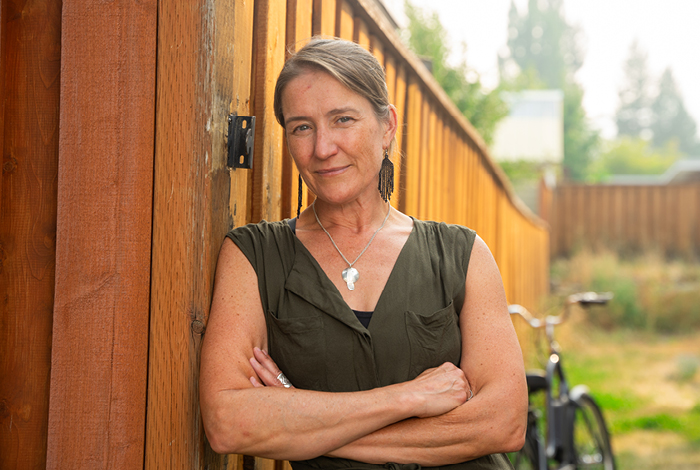
Renee Simard, Deep Energy Retrofit Pilot Program participant
Some participants will receive exterior cladding to insulate their home from the outside, such as Renee, whose 1920s-built home has undergone various additions and renovations over the decades. Replacing the stucco and mix of single- and double-pane windows can be expected to enhance the look of her house, as well as making it less drafty.
“It’s completely different,” she said. “I remember before this retrofit, I would sit in front of a window and my hair would be moving. I would have to draw the curtains to try and prevent heat loss through the windows. It’s much more comfortable now.”
So, what was behind those walls?
Part of the objective of the Deep Energy Retrofit Pilot Program was to learn how the implementation process affects homeowners and residents. We were so thrilled to catch up with the trio who all raved about their experiences.
Dan, Jonathan, and Renee also found some surprises along the way too. Dan remarked that the opening of his walls afforded him a unique opportunity to audit its plumbing. He and his family decided to make some upgrades there too as the pipes were accessible at the time. Renee was shocked to find that the bathroom in her home was positioned off of the foundation. That did provide an explanation for why the room felt abnormally cold. Then, for Jonathan, there was quite literally something behind those walls.
“The really surprising thing was they opened up a wall a bit to get a basement window in and there was this open space and in that space was an old, mahogany and brass level. In the wall! So, I’ve got this beautiful antique tool that was living in the wall. And it works, too. It’s a good little level, a few feet long.”
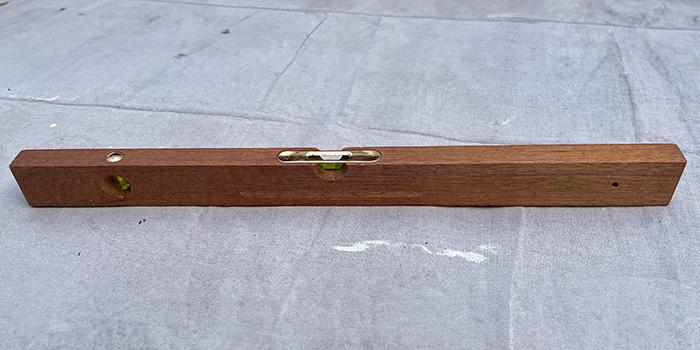
The level found in Jonathan’s walls
Now that the Deep Energy Retrofit Pilot Program is complete, we can start collecting data to see how effectively these enhancements perform through every season. We look forward to sharing our findings.

